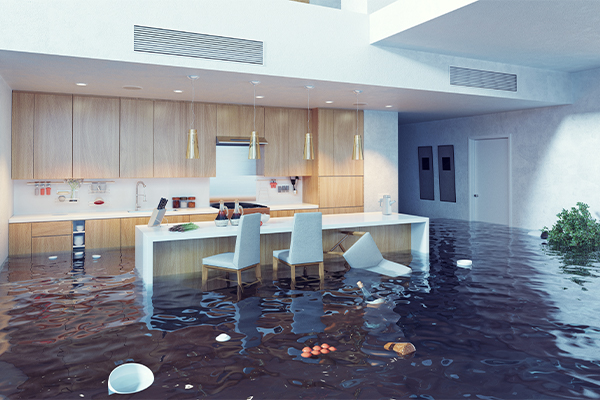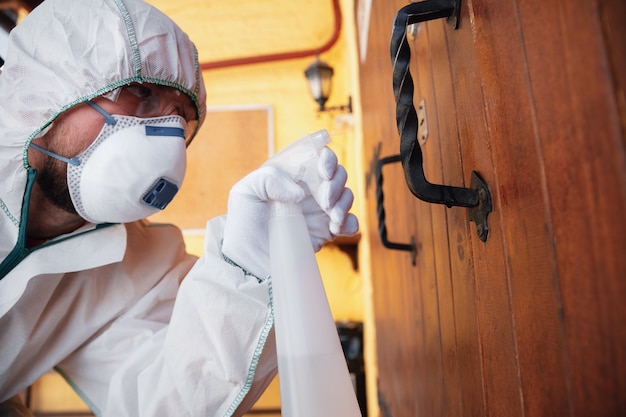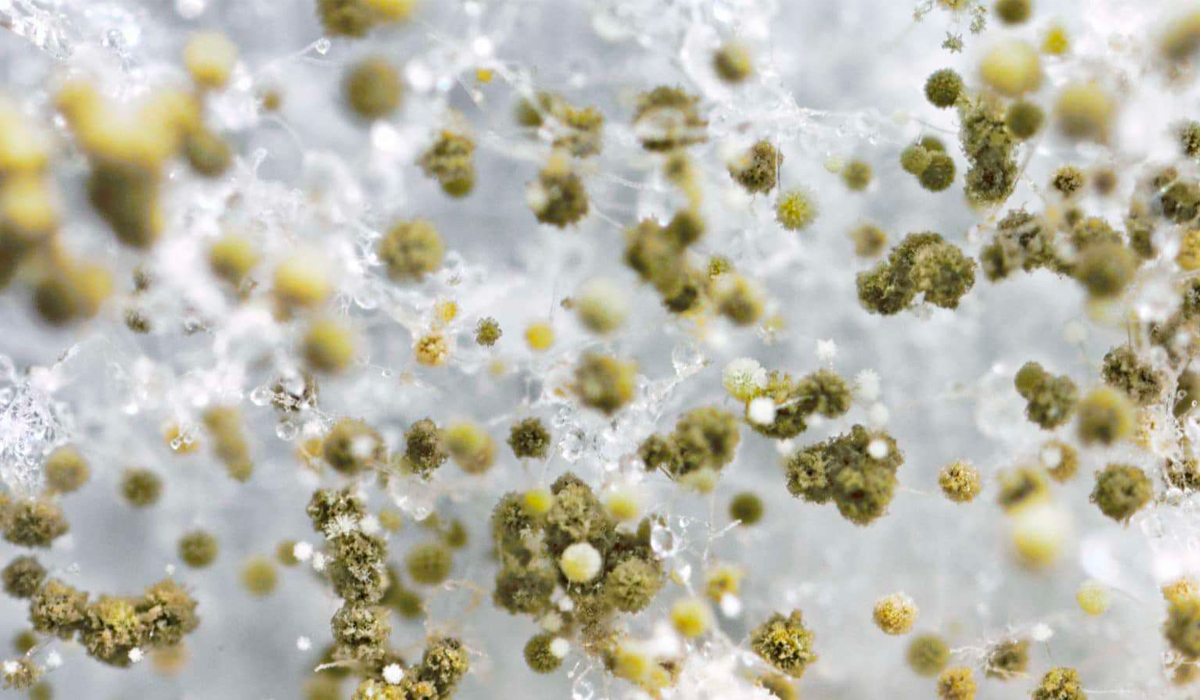
Flood-Related Issues and Mold: Understanding the Risks and Solutions
I. Introduction
Welcome to our guide on flood-related issues and mold. In this article, we’ll explore the important aspects of dealing with floods and the subsequent growth of mold. Here’s what we’ll cover:
- Definition: Understand what flood-related issues and mold entail.
- Importance: Discover why it’s crucial to have knowledge about these topics.
- Overview: Get a glimpse of what you can expect in this informative article.
- Let’s dive in and explore flood-related issues and mold in more detail.
II. Flood-Related Mold Issues
Floods can cause significant problems for both properties and people’s well-being. Let’s explore the key aspects of flood-related issues:
Causes of Floods:
- Heavy rainfall: Excessive rain can overwhelm drainage systems and lead to flooding.
- River overflow: When rivers exceed their capacity, they can spill over their banks and cause floods.
- Storm surges: Powerful coastal storms can push seawater inland, causing widespread flooding.
Types of Floods:
- Flash floods: Rapid-onset floods that occur within a short span of time.
- River floods: Prolonged floods resulting from continuous heavy rainfall or snowmelt.
- Coastal floods: Floods caused by high tides, storm surges, or hurricanes along coastal areas.
Effects of Floods:
- Structural damage: Floodwaters can erode foundations, weaken structures, and damage infrastructure.
- Health risks: Floods can lead to the spread of waterborne diseases and expose people to hazardous substances.
- Displacement: People may need to evacuate their homes temporarily or permanently due to flood damage.
Understanding flood-related issues is crucial for taking appropriate measures to mitigate their impact. In the next section, we’ll delve into the growth of mold following a flood.
III. Mold Growth
When floodwaters recede, another concern arises: the growth of mold. Here’s what you should know about mold growth after a flood:
What is Mold?
- Mold is a type of fungus that thrives in damp environments.
- It reproduces by releasing tiny spores into the air.
Common Types of Mold:
- Stachybotrys chartarum (commonly known as black mold)
- Aspergillus
- Penicillium
- Cladosporium
- Alternaria
How Mold Grows in Flood-Damaged Areas:
- Mold requires moisture to grow, and flood-damaged environments provide the perfect conditions.
- High humidity and wet materials create an ideal breeding ground for mold.
- Mold can grow on various surfaces, including walls, carpets, furniture, and personal belongings.
Preventing mold growth is crucial to maintaining a safe and healthy environment after a flood. In the next section, we’ll explore effective methods of flood prevention.
IV. Flood Prevention
Taking proactive steps to prevent floods can save you from potential damage and stress. Consider the following flood prevention measures:
Preparing for Floods:
- Stay informed about weather forecasts and flood warnings in your area.
- Create an emergency kit with essential supplies such as food, water, medications, and flashlights.
- Develop a family emergency plan and ensure everyone knows what to do in case of a flood.
Preventing Floods:
- Keep gutters and drains clear of debris to ensure proper water flow.
- Install check valves to prevent water from backing up into your home through drains and toilets.
- Elevate electrical components (e.g., fuse boxes, switches) above flood levels.
Minimizing Flood Damage:
- Use waterproofing sealants on basement walls and floors.
- Raise appliances, such as washing machines and dryers, on elevated platforms.
- Store valuable items and important documents in waterproof containers or in higher areas of your home.
By implementing these flood prevention measures, you can significantly reduce the risk of flood-related issues. In the next section, we’ll delve into the process of mold remediation.
V. Mold Remediation
Effective mold remediation is crucial to ensure a safe and healthy living environment. Consider the following steps when dealing with mold growth:
Identifying Mold:
- Visual inspection: Look for visible signs of mold, such as black or green patches on walls, ceilings, or other surfaces.
- Musty odor: Mold often emits a distinct, musty smell.
Steps for Mold Remediation:
- Assessment: Determine the extent of the mold growth and identify the source of moisture.
- Containment: Isolate the affected area to prevent mold spores from spreading to other parts of the home.
- Removal: Remove and dispose of mold-infested materials, following proper safety procedures.
- Cleaning: Thoroughly clean and disinfect surfaces using appropriate mold-killing products.
- Drying: Ensure the affected area is thoroughly dried to prevent future mold growth.
- Prevention: Address the source of moisture to prevent recurring mold issues.
Professional Mold Remediation Services:
- For extensive mold growth or if you’re unsure about handling the remediation process, it’s advisable to seek professional mold remediation services.
- Certified professionals have the expertise, equipment, and experience to effectively handle mold issues.
By following these steps and considering professional assistance if needed, you can successfully address mold growth after a flood. In the next section, we’ll discuss the potential health effects associated with flood-related mold.
VI. Health Effects of Flood-Related Mold Issues
Exposure to mold can have various health implications. Here’s what you need to know about the potential health effects of flood-related mold:
Risks of Mold Exposure:
- Allergic reactions: Some individuals may experience allergic symptoms, such as sneezing, coughing, and skin rashes, when exposed to mold.
- Respiratory issues: Mold spores can irritate the respiratory system, leading to breathing difficulties and triggering asthma attacks.
- Infections: People with weakened immune systems may be at risk of developing fungal infections when exposed to certain types of mold.
Symptoms of Mold Exposure:
- Nasal congestion and runny nose
- Watery or itchy eyes
- Coughing and wheezing
- Skin irritation or rashes
- Headaches or dizziness
Long-Term Health Effects of Mold Exposure:
- Prolonged exposure to mold may contribute to the development of chronic respiratory conditions and other long-term health issues.
- It’s important to address mold growth promptly to prevent potential health complications.
If you experience persistent or severe symptoms, it’s advisable to consult a medical professional. In the next section, we’ll explore the importance of disaster management and emergency preparedness in dealing with flood-related issues.
VII. Disaster Management and Emergency Preparedness
Being prepared for disasters and having a well-defined plan can make a significant difference in handling flood-related issues effectively. Consider the following aspects of disaster management and emergency preparedness:
Importance of Disaster Management:
- Mitigating risks: Disaster management aims to reduce the impact of disasters through proactive measures.
- Swift response: Having a plan in place allows for quick and coordinated action during emergencies.
- Protecting lives and property: Disaster management focuses on ensuring safety and minimizing damage.
Developing a Disaster Recovery Plan:
- Risk assessment: Identify potential risks and vulnerabilities specific to your location.
- Emergency contacts: Compile a list of emergency numbers and relevant authorities.
- Evacuation plan: Establish evacuation routes and assembly points for family members.
- Communication strategy: Determine a communication plan to keep everyone informed during emergencies.
- Essential supplies: Prepare an emergency kit with food, water, medications, and essential items.
Emergency Response Planning:
- First aid training: Equip yourself with basic first aid knowledge and consider taking a certified course.
- Emergency drills: Conduct regular drills to practice emergency procedures with family members or colleagues.
- Community involvement: Stay informed about local emergency protocols and community response plans.
By prioritizing disaster management and emergency preparedness, you can effectively respond to flood-related issues and protect yourself and others. In the next section, we’ll explore preservation techniques for flood-damaged materials.
VIII. Preservation Techniques for Flood-Damaged Materials
Preserving valuable possessions and cultural artifacts affected by floods requires specific techniques and care. Consider the following preservation strategies for flood-damaged materials:
Salvaging Flood-Damaged Collections:
- Prioritize safety: Ensure your safety and the safety of others when entering flood-damaged areas.
- Remove items with care: Handle wet materials and objects gently to minimize damage.
Mold Prevention Strategies for Libraries and Archives:
- Drying: Dry wet books, documents, and photographs immediately to prevent mold growth.
- Air circulation: Increase airflow in affected areas using fans or natural ventilation.
- Separation: Keep damp items separated to prevent mold spores from spreading.
Mold Remediation Guidelines for Cultural Institutions:
- Professional assessment: Consult professionals experienced in mold remediation for cultural materials.
- Isolation: Isolate mold-infested items to prevent cross-contamination.
- Cleaning: Clean moldy items using appropriate methods and materials recommended by experts.
Preservation Assessment:
- Conduct a thorough assessment of flood-damaged items to determine the extent of damage and prioritize restoration efforts.
- Seek assistance from conservation professionals for complex or delicate materials.
By employing these preservation techniques, you can mitigate damage and salvage flood-affected materials. In the next section, we’ll discuss the significance of disaster planning in addressing flood-related issues.
IX. The Significance of Disaster Planning
Having a well-thought-out disaster plan is crucial for effectively managing flood-related issues. Consider the following aspects of disaster planning:
Assessing Risks:
- Identify potential natural hazards in your area, such as floods, hurricanes, or heavy rainfall.
- Understand the specific risks associated with these hazards and their potential impact.
Developing a Disaster Plan:
- Emergency contacts: Compile a list of emergency numbers, including local authorities and relevant services.
- Evacuation routes: Determine the safest evacuation routes and establish meeting points for family members.
- Communication: Establish a communication plan to stay connected with loved ones during emergencies.
- Emergency supplies: Prepare a well-stocked emergency kit with essential items, including food, water, and medications.
Updating and Practicing the Plan:
- Regularly review and update your disaster plan to ensure its relevance and effectiveness.
- Conduct practice drills with family members or colleagues to familiarize everyone with the plan.
- Stay informed about emergency protocols in your community and participate in training exercises if available.
By having a comprehensive disaster plan in place, you can respond efficiently to flood-related issues and ensure the safety and well-being of yourself and your loved ones. In the final section, we’ll summarize the key points covered in this article.




